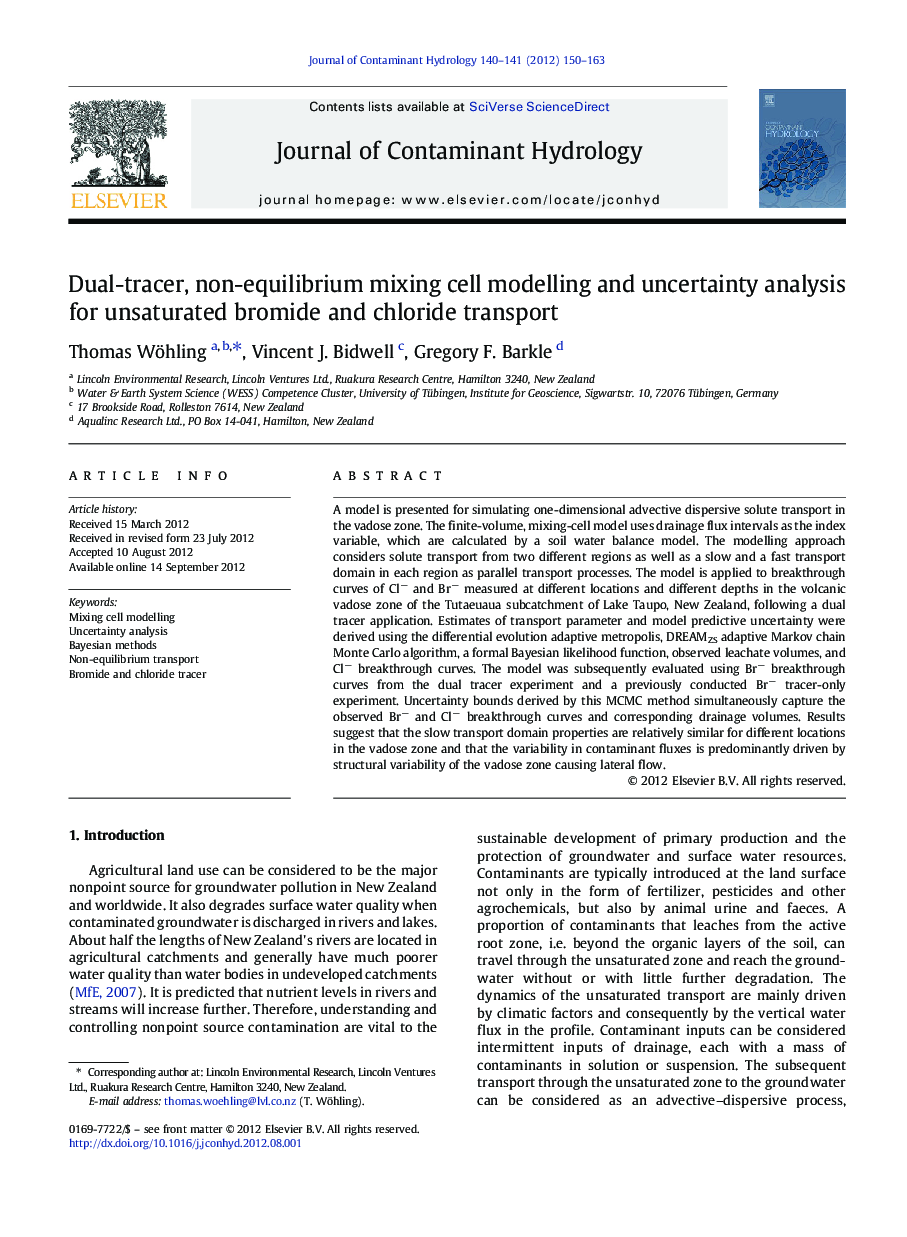| Article ID | Journal | Published Year | Pages | File Type |
|---|---|---|---|---|
| 4546744 | Journal of Contaminant Hydrology | 2012 | 14 Pages |
A model is presented for simulating one-dimensional advective dispersive solute transport in the vadose zone. The finite-volume, mixing-cell model uses drainage flux intervals as the index variable, which are calculated by a soil water balance model. The modelling approach considers solute transport from two different regions as well as a slow and a fast transport domain in each region as parallel transport processes. The model is applied to breakthrough curves of Cl− and Br− measured at different locations and different depths in the volcanic vadose zone of the Tutaeuaua subcatchment of Lake Taupo, New Zealand, following a dual tracer application. Estimates of transport parameter and model predictive uncertainty were derived using the differential evolution adaptive metropolis, DREAMZS adaptive Markov chain Monte Carlo algorithm, a formal Bayesian likelihood function, observed leachate volumes, and Cl− breakthrough curves. The model was subsequently evaluated using Br− breakthrough curves from the dual tracer experiment and a previously conducted Br− tracer-only experiment. Uncertainty bounds derived by this MCMC method simultaneously capture the observed Br− and Cl− breakthrough curves and corresponding drainage volumes. Results suggest that the slow transport domain properties are relatively similar for different locations in the vadose zone and that the variability in contaminant fluxes is predominantly driven by structural variability of the vadose zone causing lateral flow.
► We model conservative transport in different, non-interacting domains. ► The efficient mixing-cell model is easily adapted to the complexity of the system. ► Calibration and uncertainty analysis were conducted using an adaptive MCMC algorithm. ► Simulated Cl− and Br− breakthrough curves fit well to observations at four depths. ► The variability of contaminant fluxes is mainly driven by vadose zone structure.
